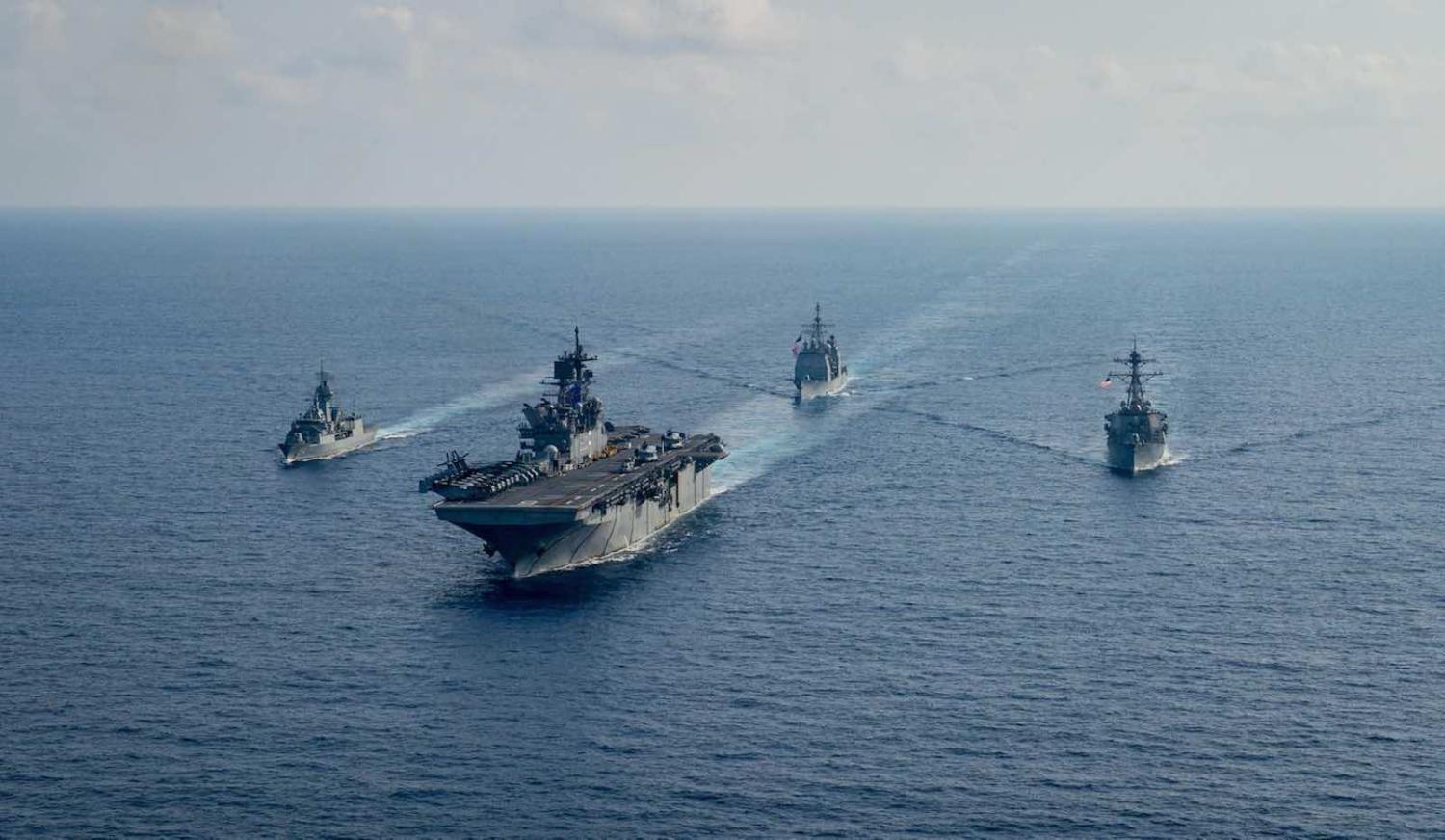It is June 2021. An American destroyer sailing near a reef held by Beijing in the South China Sea has had a collision with a Chinese frigate that was attempting to drive it off. Both vessels have suffered multiple fatalities and, damaged, are at anchor near the reef.
While who was at fault is unclear, Washington and Beijing each readily blames the other. As the US prepares to deploy more ships to the area to assist its vessel, China declares this would be an act of trespass upon its territory that would be met with force.
As tensions escalate, America calls on its friends and allies to stand with it. In turn, Beijing warns of dire consequences for those who aid Washington in infringing its sovereignty.
What should Australia do?
Such a cauldron of tensions requiring terribly difficult choices can be easily envisaged. After all, this hypothetical is not that far removed from the stand-off in 2001 when a US spy plane was forced to land on Hainan island after it was clipped by a Chinese fighter.
Washington is potentially playing coy towards Canberra, too. And if such behaviour is good enough for the US goose, presumably it can suit the Australian gander.
Any Australian response to the imagined South China Sea scenario must focus first on preventing violence, from America or China, which could spiral into war. And should the unthinkable happen, Canberra must seek to minimise any harm Australia would suffer.
In terms of how to address these goals, two broad schools of thought exist. The larger “loyalist” one generally focuses on overtly supporting Washington, based on fairly clear logic. Not only is the ANZUS treaty in place, but the US is the region’s predominant military power and will likely remain so for some time. So, to back the winning horse, as it were, by adding the Australian Defence Force to US armed power should make Beijing yet more likely to stand down and avert a conflict.
But there are problems with this approach. It does little to rein in bellicosity by Washington, an acute problem in the Trump era and one unlikely to go away, as the Chinese-American cold war has deep roots.
It also provides Canberra with little flexibility in responding to actual conflict. “All the way with LBJ” works until Beijing doesn’t blink, shooting starts and the ADF is in yet another war thousands of kilometres from our borders, now with our largest trading partner.
The second school are the “independents”’, who are seeking an Australia more self‑reliant in its security, friendly but distanced from the US, and with a more autonomous foreign policy. Here, Hugh White is the standard bearer, but Prime Ministers such as Paul Keating and Malcolm Fraser raised their voices, too.
The benefit of this approach is that it prevents the US or China from factoring in (or out) Australia’s involvement in a conflict, complicating their strategic calculations, which should induce caution. Further, it better allows Canberra to become as involved as it needs to be in a conflict, without so easily being dragged into one.
The problem with the independent school is that it rarely suggests how it might be put into play, with even White largely only calling simply for “better leadership”.
Yet one practical way would be to follow Washington’s own policy of strategic ambiguity. This simply means making it unclear whether a nation will militarily support its friends. The aim instead is to instil caution both in the friend (as it cannot go around picking fights, expecting protection) and any foes that might otherwise be cavalier in their threats.
America has followed just such a policy with Taiwan and the Philippines, to prevent them provoking China, but also to curtail Beijing’s aggression. Indeed, there is arguably a similar strategic ambiguity in the ANZUS Treaty – which commits neither Australia nor the US to the other’s defence, stating only that both will consult in the event of a conflict. Hence, Washington is potentially playing coy towards Canberra, too. And if such behaviour is good enough for the US goose, presumably it can suit the Australian gander.
So, how might Australian ambiguity look, and differ from current arrangements?
First, ambiguity needs more measured statements about the US relationship by Australian leaders, rather than paeans on the centrality of America. Similarly, saying no to some American requests, such as to deploy the ADF to the Arabian Gulf, will start to set the right tone.
Second, an independent position must be captured in White Papers (and Strategic Updates) and carefully explained to Washington and Beijing. For example, both should know that in any US-China war, Australia might wish to behave towards America as the US did to Britain before Pearl Harbour: being all help, bar any direct assistance. Neither side might like this, but Beijing especially should know the alternative is that it casts the first stone, and then finds the ADF on the front lines.
Finally, developing independent capabilities will reduce potential dependencies on America. For example, in a world where commercial imagery satellites allow nations to develop sovereign intelligence capabilities, Canberra should briskly pursue such options.
Of course, such an approach has a number of risks, including angering Washington. But fear of censure should not prevent pursuing our policy interests, and independent capabilities would mitigate the adverse impact of upsetting the US.
Most importantly, a more independent Australia might genuinely cool bellicose heads in Washington. If by doing so the prospects of war are reduced, then by becoming a more uncertain ally, we may be a better friend to America.

